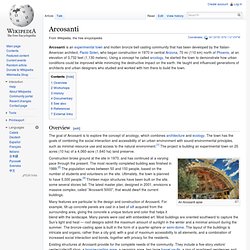

Geothermal Energy and Ground Source Heat Pumps. Although they sound like they are different terms for the same thing, geothermal energy and ground source heat pumps are two different systems, with little in common other than that they are making use of what lies below the surface of the Earth.

They do it in very different ways, however. A geothermal energy system uses heat from below the surface of the earth as an energy source, much like solar panels capture sunlight and convert it into useful energy (electricity or hot water). A geoexchange system with a ground source heat pump (GSHP) is more akin to a hybrid automobile. It is not a method for generating energy, but a method for more efficiently using energy.
It still takes energy input to operate a GSHP system, but a GSHP can be as much as 300% to 400% more efficient when compared to highly efficient furnaces, which are typically in the high 90s for efficiency percentage. Geothermal systems are best suited for larger applications. Info and images: Selecting an Earth Energy System. Guest Post: New Proposal by Egyptian College Student Promises Endless Free Energy. The physics behind renewable propulsion systems of the future Grady Winston’s guest post may cause a few to raise their eyebrows, wondering about the reason for speculating on such futuristic concepts as zero-point energy, or energy that comes free to all because it just happens to be there for the taking.

This is an informational report, based on work from physicists. So to naysayers, just remember what some of the first startled reactions were to far-out concepts such as wireless telephony. Thanks for the post, Grady. Up until now, students planning to go into energy-related careers have been encouraged to study subjects such as geology or nuclear engineering. Limitations of Traditional Forms of Power Historically, transporting people or cargo has meant using finite power sources. Each of these forms of power depends on non-renewable resources. Alternative Fuel Sources. One Per Cent: Giant desert greenhouse inspired by camel's nostrils.
Duncan Graham-Rowe, contributor (Image: Sahara Forest Project) A unique greenhouse that is irrigated using seawater will be built in the desert by the end of this year The $5.3 million Sahara Forest Project, just outside Doha in the Qatari desert, will borrow tricks from nature to extract the salt and create conditions that are ripe for plant growth, all without any external energy or resources.

The 10,000-square-metre site works by exploiting the difference in temperature between surface seawater and water taken from hundreds of metres below the surface. Eco Architecture: Food City – A self-sufficient metropolis planned for Dubai. Eco Architecture: Food City – A self-sufficient metropolis planned for Dubai Eco Factor: Off-the-grid sustainable complex plan for Dubai.

Sustainable Skyscraper Absorbs Carbon Dioxide. This impressive new skyscraper is just a concept but it may soon be added to Taichung, Taiwan's skyline. Designed by Vincent Callebaut, the Biotic Arch would be a revolutionary and creative skyscraper that would also be one of the most environmentally friendly buildings to date. The Biotic Arch would acquire electricity from a mix of bio, solar, and wind energies. The Arch also takes in excessive carbon thanks to its living facade and vertical gardens.
This would help the Taichung Government reach their overall reduction policies, not to mention, help with their proximity to China and their carbon footprint. The Biotic Arch is also a creation for Taiwan's centennial and honors the local architecture while looking towards the future. Arcosanti. Coordinates: Arcosanti is an experimental town and molten bronze bell casting community that has been developed by the Italian-American architect, Paolo Soleri, who began construction in 1970 in central Arizona, 70 mi (110 km) north of Phoenix, at an elevation of 3,732 feet (1,130 meters).

Design & Architecture Archives. Plywood Designs from '60s Have Lessons For Today. BoingBoing points to a 1960 publication from the Douglas Fir Plywood Association, Second Homes for Leisure Living, calling it " a rather glorious bit of propaganda for super-modernist plywood living.

" But it is a lot more than that. It is another world. Fifty years ago they could write: With everyone enjoying longer vacations....more free time...better highways making remote retreat areas more accessible.... the mass exodus to the mountains, desert or seashore is easy to understand and-even better- fun to participate in. But the extraordinary thing is the modesty of the plans, the small, multiple use spaces. Click to enlarge They even foresaw the Grow Home, where you start small and add on as you go.
Michelle Kaufmann had a good laugh when I sent her this: rchitect Philip Thiel has put two completely conventional buildings together here in a way that departs from the conventional in an unusually charming and practical way. Solar Forest Keeps Cars Cool And Juiced. Lilypad, a prototype of auto-sufficient amphibious city. LILYPAD, A FLOATING ECOPOLIS FOR CLIMATICAL REFUGEES 2100, a large crowd of ecological refugees Further to the anthropogenic activity, the climate warms up and the ocean level increases.

According to the principle of Archimedes and contrary to preconceived notions, the melting of the arctic ice-floe will not change the rising of the water exactly as an ice cube melting in a glass of water does not make its level rise.